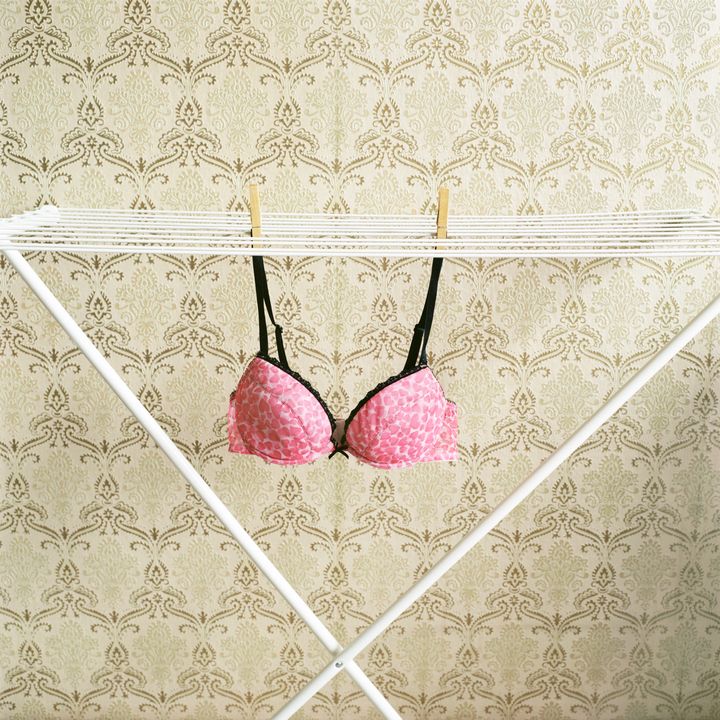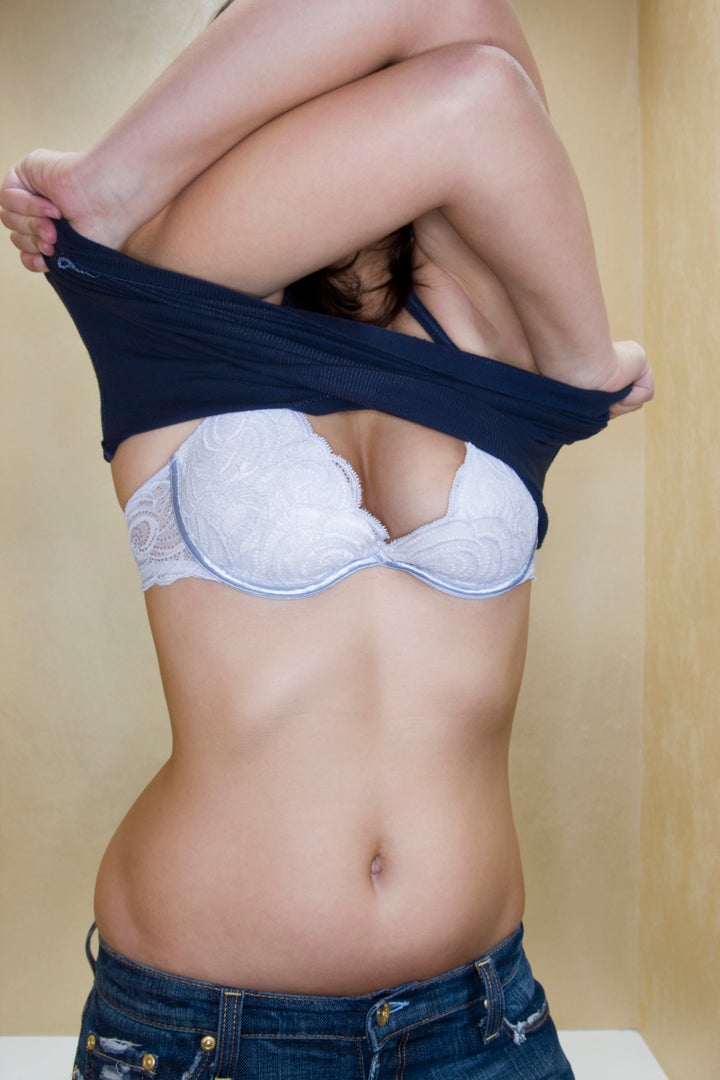
It may be time to get rid of your old bras.
If you've been wearing the same two bras on rotation for years, you should give your boobs a little more love and support (literally and figuratively). They deserve more than stretched-out bra bands and straps that just won't stay on your shoulders.
"Bras have an expiration and a shelf life, just like everything else," Lyn Lewis, CEO of luxury lingerie company Journelle, told HuffPost.
"Just like your jeans need to be replaced occasionally and your T-shirts wear out, so do your bras."
Why can't you just keep bras forever?
Technically, you can, but they probably won't be all that comfortable once they've started stretching out and losing their shape. As Lewis mentioned, if a bra is too stretched out, it may not be offering adequate support.
Wearing an ill-fitting, stretched-out bra "feels like the equivalent of wearing shoes that are the wrong size, once you've been spoiled by a bra that fits you well," Lewis said.
Wearing a bra that fits properly has huge lifestyle benefits, she added.
"Before I started working at Journelle, I would be constantly tugging at my bra and pulling at straps that were falling down, and this is what a lot of women do, and they don't even realise they're doing it," she said. "It just becomes a habit."
Lewis added, "It is such a freedom to put on your bra in the morning and literally not touch it all day."
How long should you really be keeping your bras?
The experts we spoke to agreed that a bra's lifespan is largely dependent on how often it's worn. For instance, as Iris Clarke of Iris Lingerie in Brooklyn, New York, told HuffPost, if you're wearing one bra almost every day, you shouldn't expect it to last much longer than a month.
"If you have four or five T-shirt bras to rotate, [they can last] for at least a year," Clarke said. She recommended women keep a variety of bras in their lingerie drawers to get the most out of them. She suggests four or five basic T-shirt bras, a strapless bra, a backless bra and some lace bras.
Lewis pointed out that many women might have a couple favourite bras in constant rotation, "and if you only have two favourite bras that you pretty much wear every day, after six months, [they] really need to be replaced."
"If you're like me and you have an insane lingerie drawer because you're obsessed at this point, and you only wear a given bra ― maybe a special piece ― once a month, it will last you a really long time," she added.
What are the signs that it's time to get rid of a bra?
You'll know a bra has come to the end of its life if the band is stretched out, both experts said.
According to Lewis, when you buy a new bra, you want the band to be snug when it's connected at the loosest hook. That way, as the bra stretches over time, you can tighten it accordingly.
"You should be able to get two to three fingers in between the band and your skin when it's closed," Lewis said, adding that if you have to pull the band beyond the hook closures to make it tight, "it's probably time to replace your bra."
Another thing to pay attention to is your bra's straps. Clarke noted that if they're always falling off your shoulders, even when tightened, it's probably a sign the bra has stretched and should be replaced. Bra straps can be altered, Clarke said, but noted that having to tighten them all the way so the buckles are on the top of the shoulder isn't "the proper way of wearing a bra."
You'll also know your bra has stretched out if the band is always hiking up in the back, as opposed to staying in place, Clarke said. When you're raising the band in the back, Lewis added, it sometimes results in a gap between the bra cups and your body. That's another telltale sign that it's time to get a new bra.
"If you can see clearly the outline of a bra cup through a T-shirt, it's likely because the wearer's bra is stretched out or has become too big for them," Lewis said. "It means that you're not being supported and you're not getting the best shape, and it's probably not very comfortable. It's hiking up in a funny way and you've got to wiggle all day just to keep it in place."
Both experts agreed that bra padding can wear out, too. Clarke said that if you see any sort of crinkle or a permanent crease in the padding, "that's one sign to get a new bra."
In terms of fabrics, there are some, like cotton, that are more durable, while certain laces can be much more delicate. Lewis noted, however, that some laces can be quite durable. Clarke pointed out that bras with reinforced seams to provide good support will also hold up longer than a thinner T-shirt bra.

Proper bra care is super-important for extending the life of your lingerie.
As we've written before, you really should be washing your bras every three wears to "keep the integrity of the bra for as long as possible," Danny Koch, owner of Town Shop in New York told Marie Claire U.K. in 2017.
Naturally, bras collect oils from our skin and residue from our deodorant, so regular washing keeps them in tip-top shape.
But don't be so quick to throw your bras in the washing machine with everything else in your laundry bag. When you're investing anywhere from R100 to R1,500 for a quality piece, you need consistent care to maximise your investment.
"Washing a bra with lingerie wash is probably the best way to do it," Lewis said, adding that lingerie wash is a gentle soap designed specifically for use on delicate lingerie fabrics.
Lewis recommends washing lingerie by hand. Her method involves filling the sink with warm water and lingerie soap, adding her bras, and letting them sit for about 15 minutes. Afterward, she rinses them and hangs them up to dry.
Clarke said many of her clients prefer to hand-wash their bras, but she puts her bras in a mesh laundry bag and sends them through the gentle cycle with nothing else in the machine. Like Lewis, she recommended hanging them to dry.
Using her method, Clarke said, "they come out perfectly".
What do you do when you're ready to toss a bra?
Before you go straight for the garbage can, know that there are other options for getting rid of your bras. If they're lightly worn but too stretched out to fit you comfortably, you can actually donate them to thrift stores, women's shelters or organizations that support breast cancer survivors.
If crafty DIYs are your thing, maybe a bra strap flower headband or even a bra cup purse are up your alley. Who knew old bras could be so versatile?




